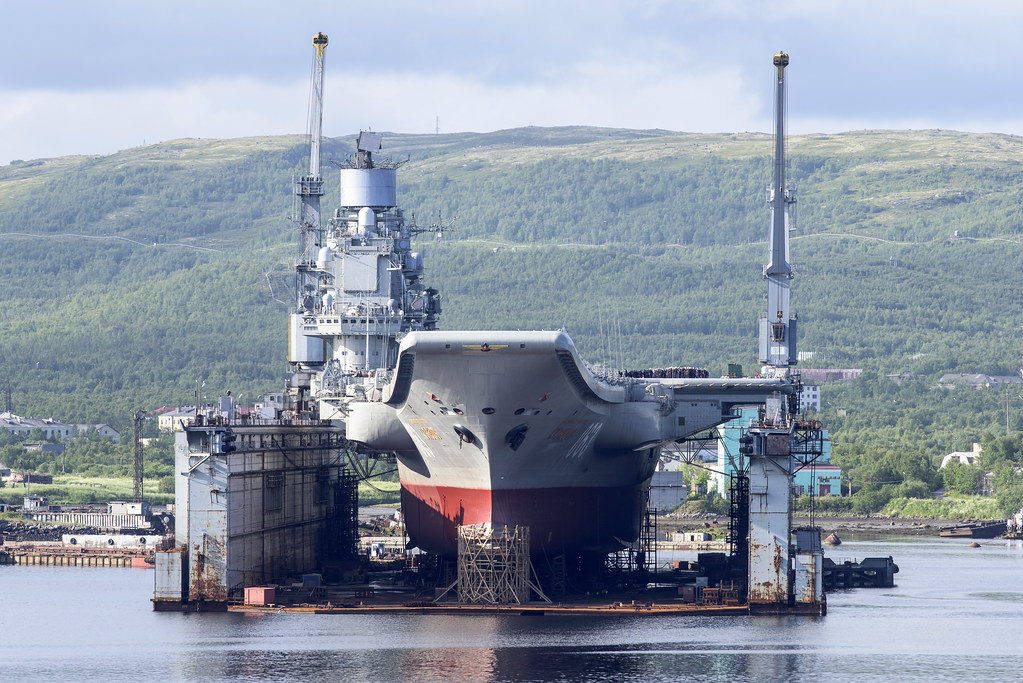
The fate of Russia’s sole aircraft carrier, Admiral Kuznetsov, continues to capture global attention as it struggles amidst a sea of operational challenges and geopolitical tensions.
With a history plagued by mishaps, ranging from fires to mechanical failures, the Kuznetsov stands as a stark symbol of a naval might that fails to match modern standards.

Since its last voyage in 2017, the carrier’s future has been shrouded in uncertainty, fuelling speculation over whether it might be time for Russia to concede to the practicalities of scrapping the beleaguered vessel.

Launched in 1995, the Admiral Kuznetsov was outdated from its inception, lacking the nuclear power and advanced launching systems of its American counterparts.

It was a carrier with an intention to project power but plagued by a “problematic history,” as noted in the reports. Its array of issues led one seaman to tragically lose his life in a fire during a 2009 deployment, highlighting the vessel’s perilous state.

As Russia grapples with its military campaign in Ukraine, having seen both the Caesar Kunikov and the flagship Moskva sunk, the Kuznetsov’s absence from action speaks volumes about its operational state.

Described as “a hazard to herself, her crew and anyone nearby,” the carrier’s plight has turned it into a virtual seagoing joke, where its most crucial support craft is comically a tugboat, essential for its frequent tows to port for repairs.

Yet, scrapping the Kuznetsov could be seen as an economic and practical decision for Russia. The nation’s overreliance on Cold War era technology has been laid bare in the Ukraine conflict, with the carrier’s outdated capabilities and the chronic inefficiencies of Russia’s military apparatus now in the spotlight.

The question remains whether Russia will take the public relations hit of retiring their only carrier as their military strategies are dissected under the harsh light of global scrutiny.

The global context only heightens the precariousness of the Kuznetsov’s position. While Russia’s naval struggles mount, other world powers like the United States confront the need for a naval strategy overhaul in the face of emerging threats.

The rise of hypersonic weapons and anti-ship missiles challenge the tactical relevance of aircraft carriers, with adversaries crafting anti-access/area-denial (A2/AD) strategies directly targeting these symbols of naval power.

Comparatively, Russia’s financial constraints and strategic focus on land power over sea power have historically hindered the development of a robust carrier fleet.

Post-Soviet economic realities coupled with the prioritization of tanks, missiles, and submarines left aircraft carrier ambitions adrift.

Kuznetsov’s operational woes mirror a broader narrative of Russia’s inability to modernize its naval forces, a story not only of financial challenges but also of misplaced focus and underutilized human expertise.

As global military dynamics evolve, the Admiral Kuznetsov’s fate hangs in the balance, emblematic of a bygone era and a nation’s struggle to adapt.
Relevant articles:
– Russia’s Aircraft Carrier Nightmare Is Just Getting Started, The National Interest
– The Navy’s Aircraft Carrier Nightmare Is Just Getting Started Now, The National Interest
– Aircraft Carriers: Why Russia Never Built a Fleet of These Powerful Warships, nationalinterest.org
– 5 reasons why Russia’s only aircraft carrier is a seagoing joke, We Are The Mighty

